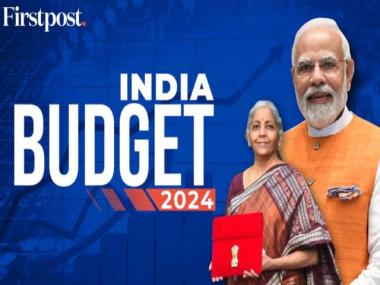Experts and economists have hailed the fiscal projections in the interim Budget, saying the lower fiscal deficit forecast shows that the government, even in an election year, is serious about fiscal consolidation and that the numbers look achievable.
KV Subramanian – Executive Director of the IMF and former Chief Economic Advisor to the Government of India said, “…As I said, it is a non-populace budget. Compared to 5.9%, which was a budget estimate, the actual fiscal deficit has been announced at 5.8%. I sense that when the revised numbers come, the fiscal deficit will be even lower because the revenue that has been projected will be much higher. 5.1% is very good…Unless there is a change in the Budget that comes in July, I would say that the 5.1% will be achieved…”
According to Devendra Kumar Pant, chief economist at India Ratings, the two broad themes of the interim Budget are fiscal consolidation and stepping up focus on agriculture/rural to course correct, to some extent, the differential benefits of the ongoing economic growth that’s tilted in favour of upper-income bracket/urban households.
The projected fiscal deficit numbers for FY24 and FY25 suggest that the government is serious about achieving the fiscal consolidation path of 4.5 per cent fiscal deficit by FY26, and given the nominal GDP growth assumption and revenue buoyancy, the target appears plausible, Pant said in a note.
The net market borrowing of Rs 11.75 lakh crore in FY25 augurs well for the bond market and is likely to have a favourable impact on 10-year G-sec yields, he added.
Former CEO NITI Aayog Amitabh Kant said, “Budget has a lot for women, young people, farmers. The budget is all-inclusive for everyone. The philosophy of the budget is that when you lift these people above, the whole country grows and progresses. I’ve worked with this government for a long time and I believe that the government believes in saturation, that all the government schemes must get saturated with everybody. It doesn’t look at caste, it doesn’t look at creed…But the budget is progressive. It looks at 2047, as the visionary wrote towards its development, and says that the country must grow at rapid rates to become a developed country by 2047….”
Aditi Nayar, the chief economist at Icra Ratings, said the higher than expected capex (Rs 10 lakh crore vs Rs 9.3 lakh crore for FY24, and Rs 11.1 lakh crore vs 10.2 lakh crore for FY25; and lower than projected fiscal deficit of 5.8 per cent for FY24 vs 6 per cent earlier, and 5.1 per cent for FY25 vs 5.3 per cent seen earlier) suggest that the quality of expenditure is going to be healthier than earlier.
Faster fiscal consolidation and a dip in borrowings will help cool GSec yields further over the coming year, as long as the estimates for revenue and capital receipts appear credible as the year progresses, she added.
The revised FY24 budget estimate has indicated higher central tax devolution compared to the budget estimate. This implies that Rs 3.6 lakh crore will be released in Q4, which is 5 per cent higher year-on-year, which provides a further downside to state bond issuance in the current quarter, which was indicated at Rs 4.1 lakh crore, she said.
Ashish Chauhan – CEO National Stock Exchange of India (NSE) said, “When the Budget speech was being read, three words that came to my mind were – growth, welfarism and fiscal restraint. It is very difficult to achieve all three objectives by a government and they have proved over the last 10 years that somewhere they have been able to create brick-by-brick a social security framework which is available to every citizen of India…Whatever has happened in the last 10 years, in terms of roads, ports, airports – the logistics cost has come down to a single digits. That is a very welcome move. The Atamanirbhar Technology that has been developed in Vande Bharat, many metros is going to reduce the cost of logistics even further…”
“The digital infrastructure needs to be enhanced. Despite all the efforts towards Digital India, the digital divide is still there. My expectation is a minimum 15 per cent enhancement in expenditure on digital,” says ASSOCHAM National Council on Education Chairman Kunwar Shekhar Vijendra.
Yezdi Nagporewalla, chief executive at KPMG India, the interim Budget has ensured to not be swayed by short-term political compulsions and ensuring to keep the fiscal deficit in check. It also shows the government’s seriousness about treading on the green growth path commitment to equitable and inclusive growth focusing on the poor, women, youth and farmers, infrastructure development and fiscal prudence. These are likely to create new opportunities, uplift demand, and unlock multipliers for the economy. And the biggest highlight is fiscal rectitude with fiscal deficit estimate for FY25 at 5.1 per cent, he added.
According to Radhika Rao, senior economist at DBS Bank, the interim Budget has prioritised pragmatism over populism by focusing on higher capex and faster fiscal consolidation. The math not only projects a better-than-budgeted deficit target for FY24 but also pegs the FY25 goalpost at a narrower 5.1 per cent against expectations of 5.3-5.4 per cent. By extension, gross and net borrowings are much lower than FY24, giving significant relief to the debt market, which will help keep a lid on the cost of borrowing and crowd-in the private sector.
Despite the welfare focus on women, youth, poor as well as farmers, the government has refrained from outright populism, while maintaining a continued emphasis on capex to improve the quality of spending, Rao said.
Union Finance Minister Nirmala Sitharaman presented the interim budget in Parliament today. However, she mentioned that the full budget will be brought in July.”In the full budget in July, our Government will present a detailed roadmap for our pursuit of Viksit Bharat,” she said.
In a landmark announcement during the presentation of the Interim Budget 2024-25, Nirmala Sitharaman revealed the government’s ambitious plan to create a corpus of Rupees One Lakh Crore to propel private investment in sunrise technologies.
Link to article –





